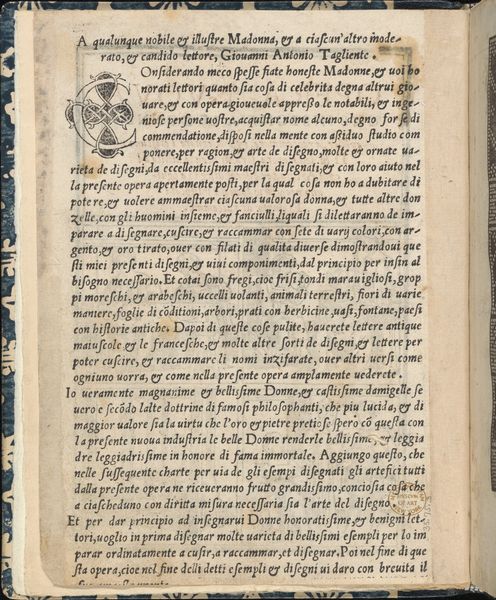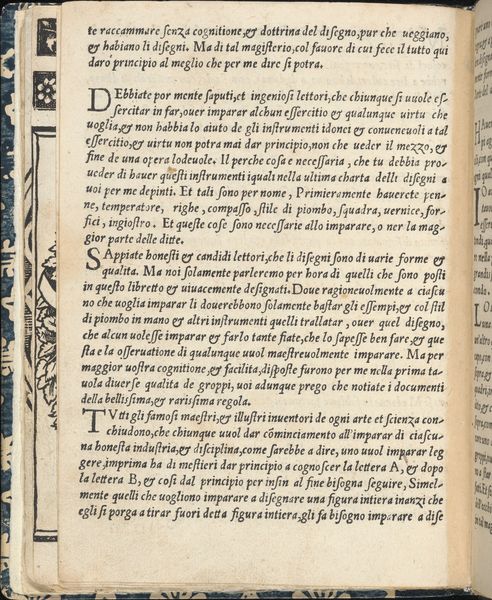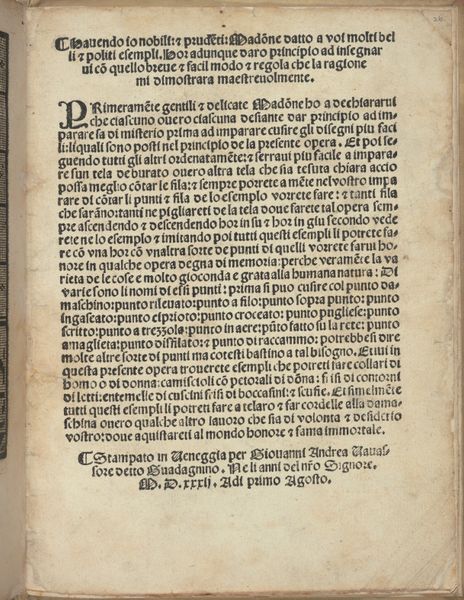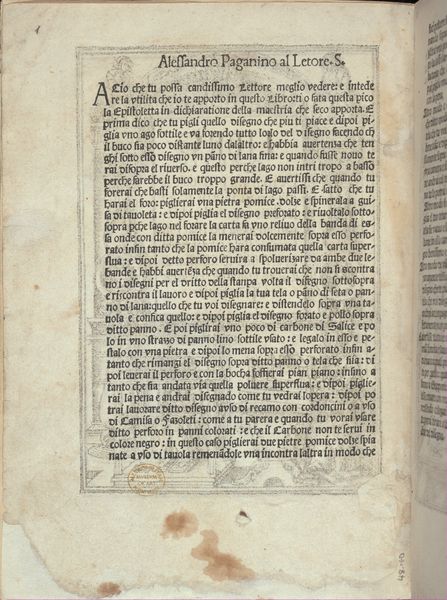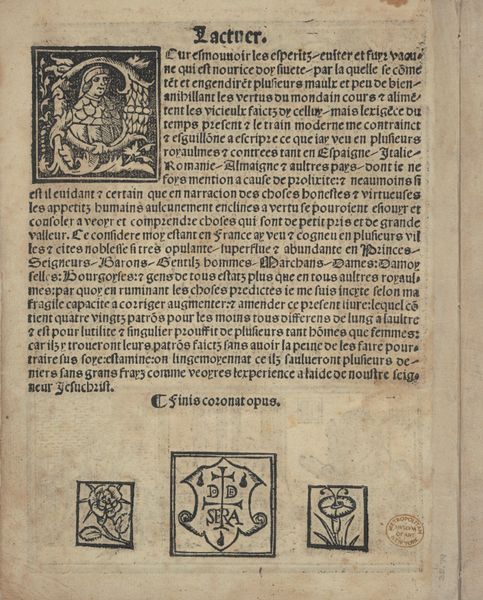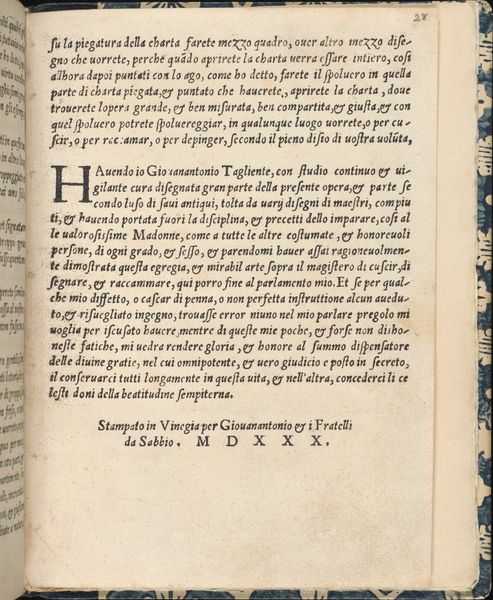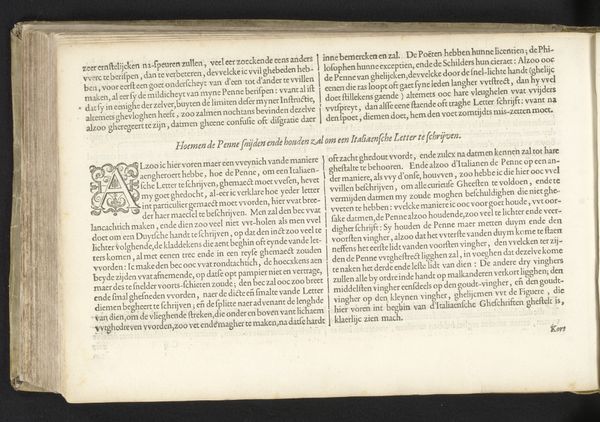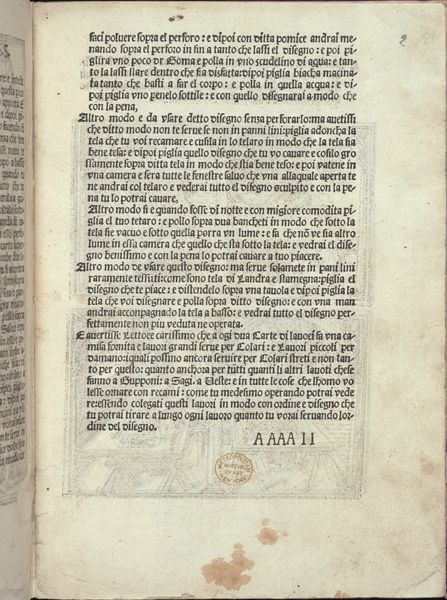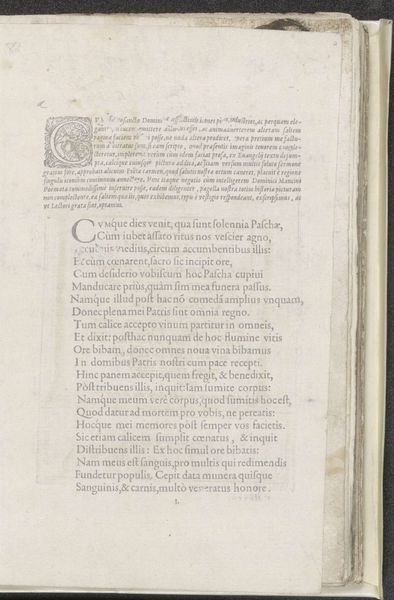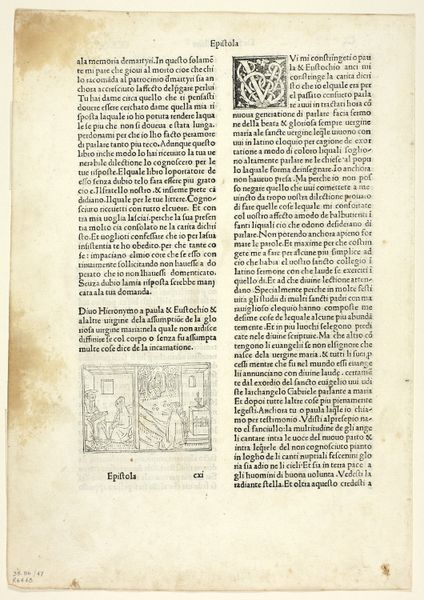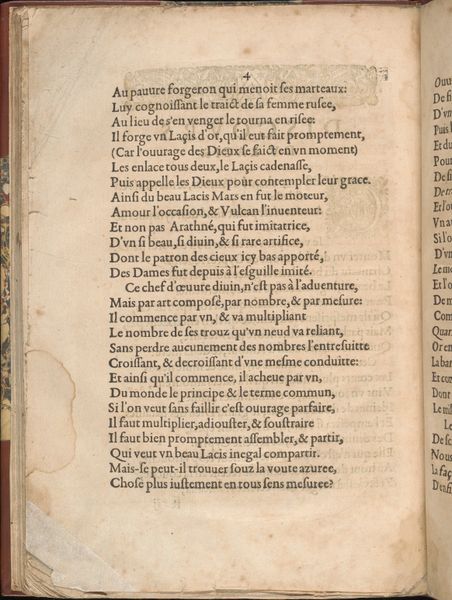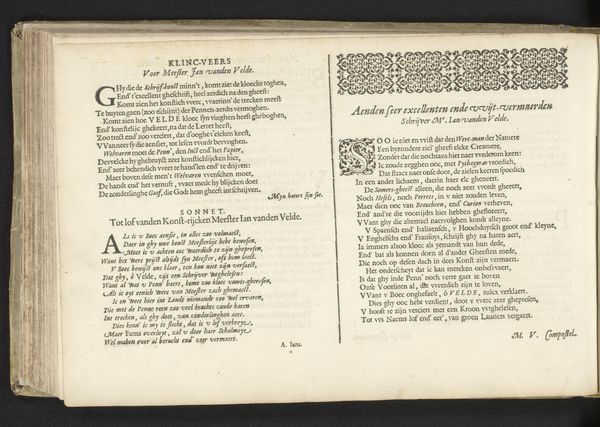
drawing, print
#
drawing
# print
#
11_renaissance
#
italian-renaissance
Dimensions: Overall: 7 13/16 x 6 3/16 x 3/8 in. (19.8 x 15.7 x 1 cm)
Copyright: Public Domain
Curator: Let’s turn our attention to a page from Giovanni Antonio Tagliente’s *Essempio di recammi*, created around 1530. Editor: The stark black-and-white contrasts immediately grab me. The text feels dense, almost claustrophobic, but the glimpses of illustrations offer small reprieves. It's very focused on the techniques and labor necessary for production. Curator: Indeed. Tagliente’s work is incredibly important because it gives insight into the world of Renaissance needlework and its connection to feminine education and cultural values of the time. This page is essentially a pattern book, instructing women in the intricate techniques of embroidery. Notice the elaborate initial “R.” Editor: Absolutely! This wasn’t just about aesthetics; needlework was a craft—a skill—and books like this directly impacted what women could produce and contribute within their households and, by extension, to commerce. Can you imagine the time spent learning each stitch? The materiality is key: linen, silk, metal threads; all transformed through practiced labor. Curator: Precisely! And think about the social expectations embedded within this labor. It highlights the intersection of skill, gender, and class. Women, constrained by societal roles, found a means of creative expression and, potentially, economic contribution, using patterns like these. The very act of embroidering these patterns allowed for creative license and, perhaps, a subversive interpretation of prescribed roles. Editor: It really highlights the dual nature of these kinds of domestic crafts; they confine, but also empower. The labor, material and instruction encoded within a small, practical object open so many discussions on skill and technique! Curator: Exactly. Examining Tagliente’s book through the lens of cultural expectations and practical skills shows how the personal, creative labor becomes intrinsically linked with identity formation and gendered expectations within Renaissance society. Editor: It prompts us to consider what happens when we view domestic labor as culturally and economically important practices—practices with both creative skill and great amounts of effort required. Curator: A deeper look helps us understand not only the skills of women, but also the intricate web of power and creativity intertwined within seemingly simple acts of artistic craft.
Comments
No comments
Be the first to comment and join the conversation on the ultimate creative platform.


